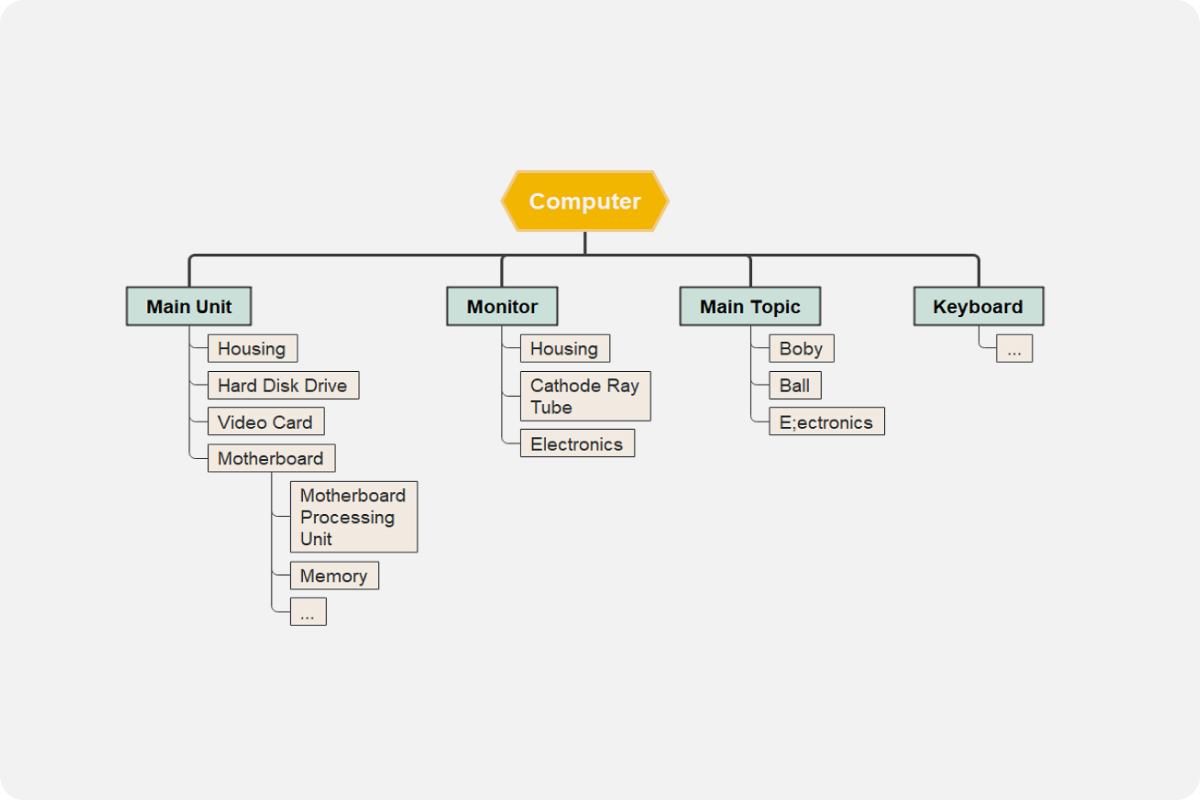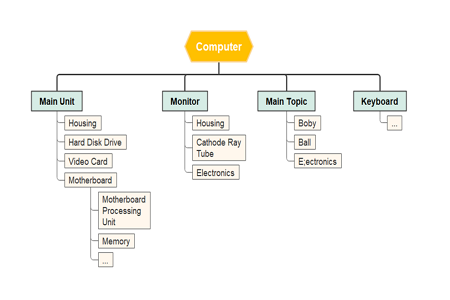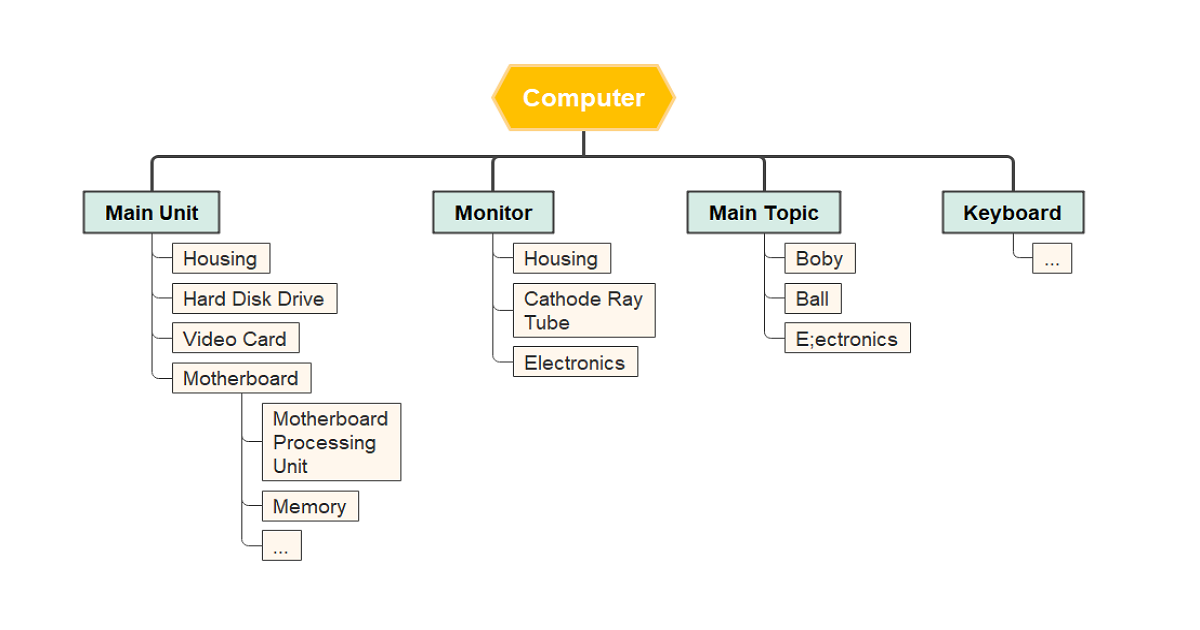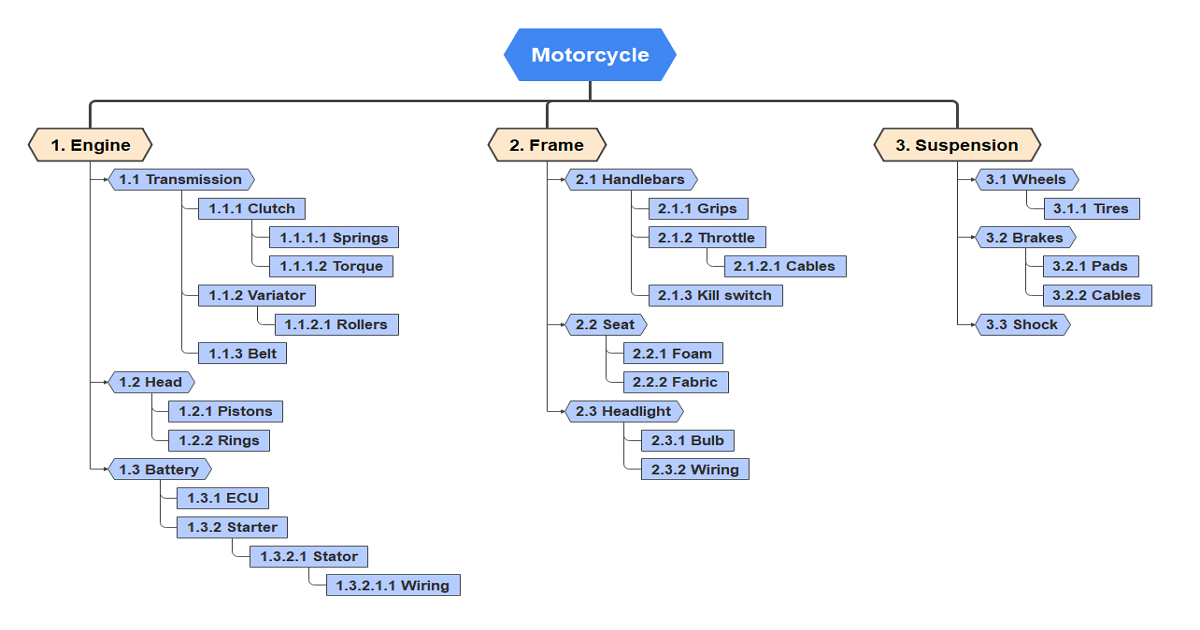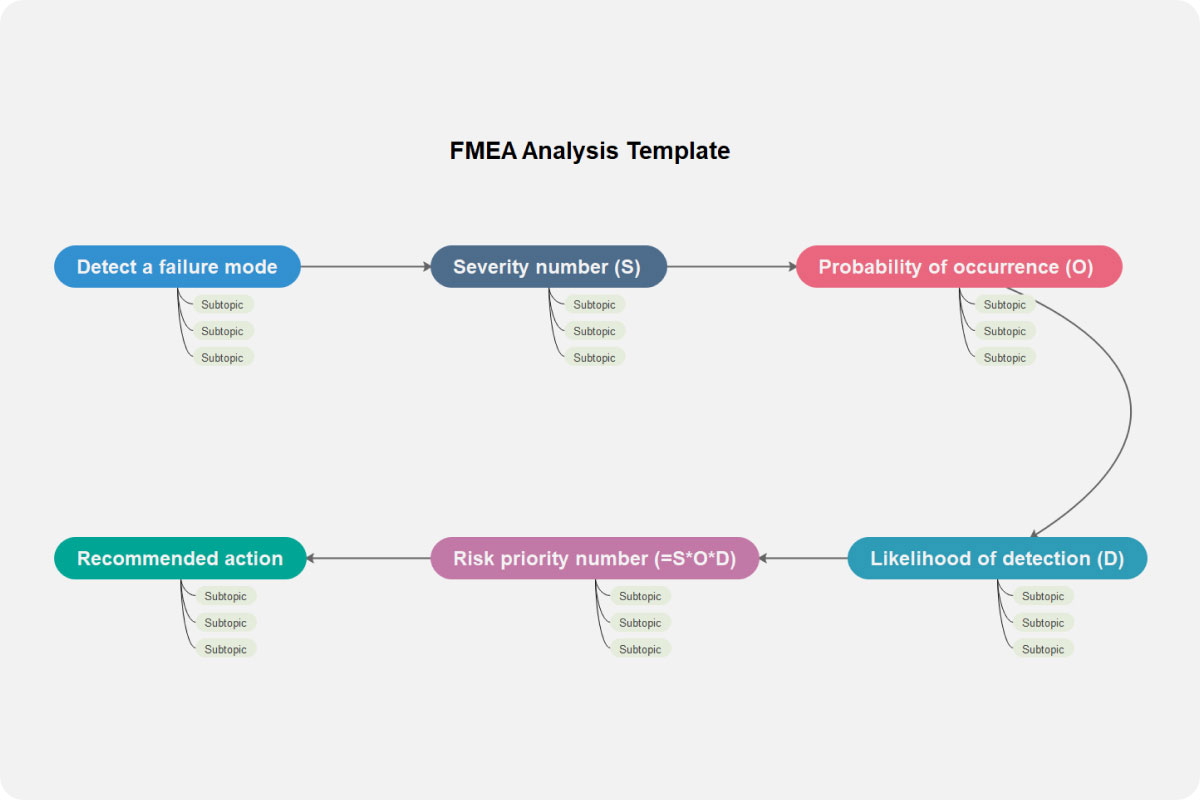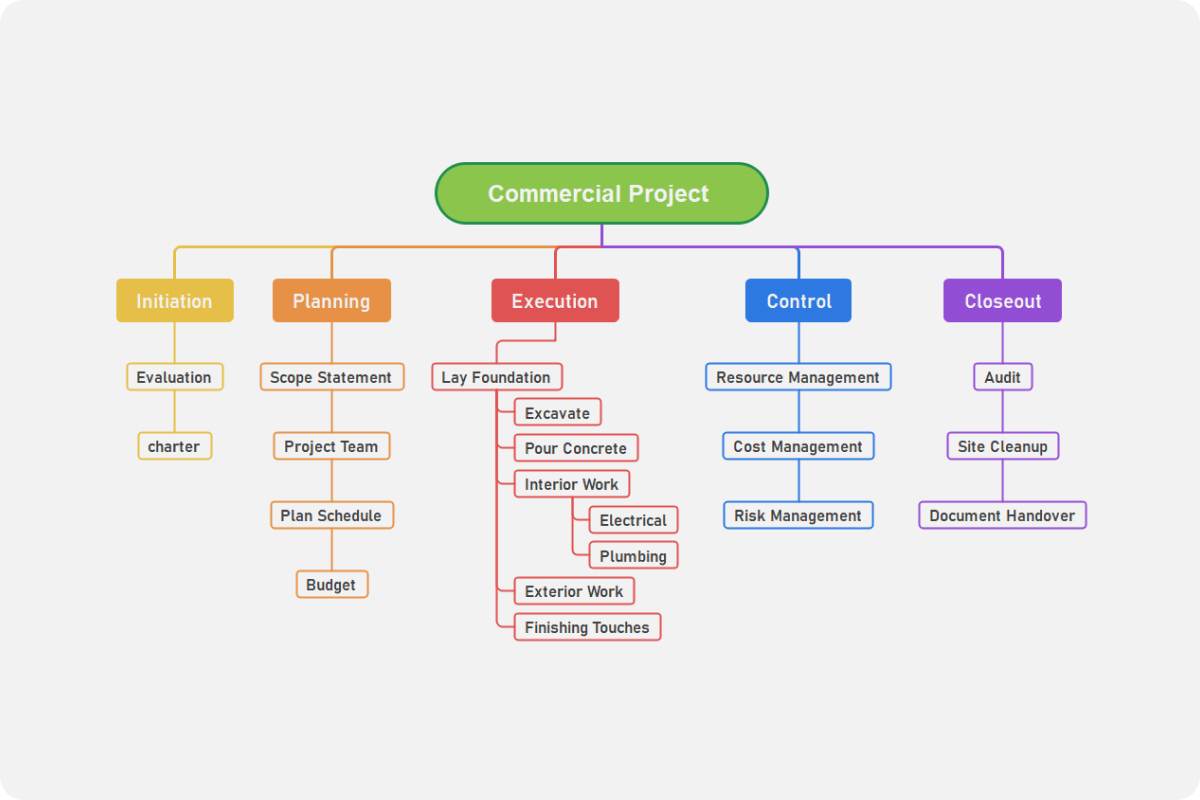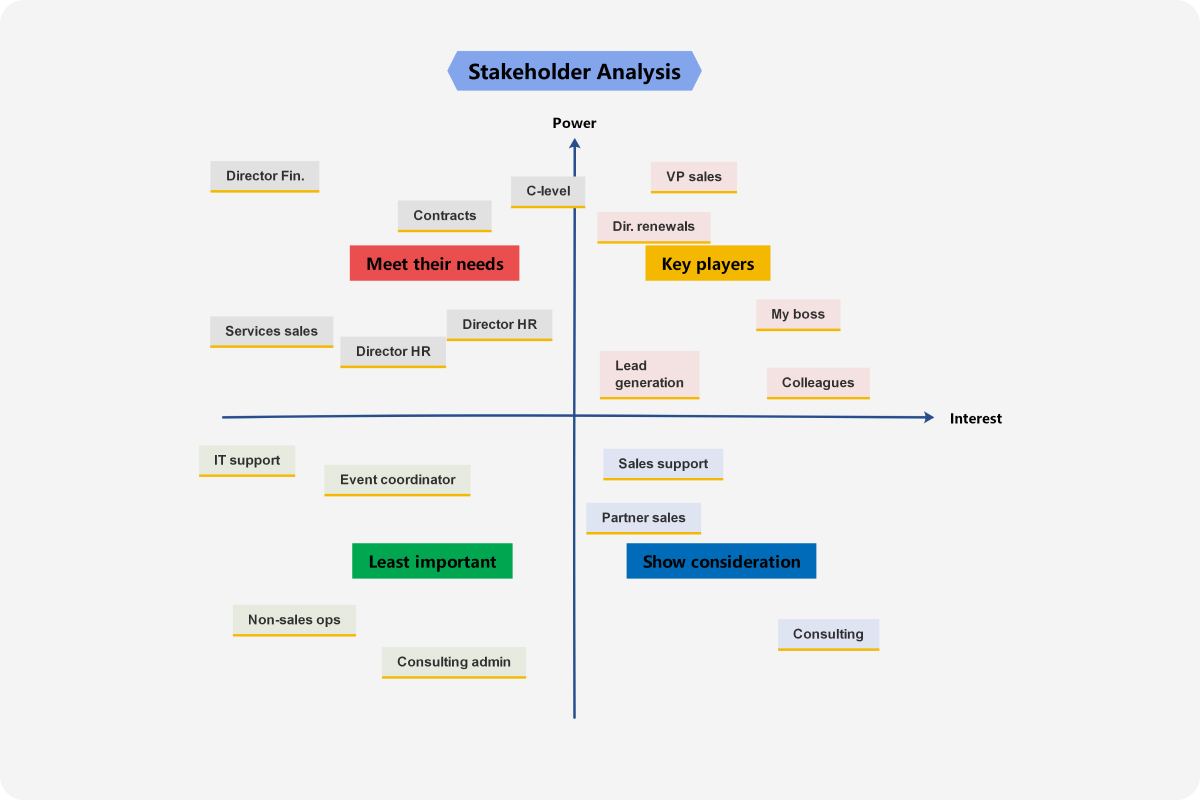About the Product Breakdown Structure Template
When deciding to launch a project, it is essential to provide visual representation by breaking down product components and the relationship among the components involved.
The Product Breakdown Structure or PBS is a hierarchical structure of elements and products that the project needs to succeed or the results that an organization's project will deliver. To put it into a more specific context, it is like your shopping list. It is a blueprint that encompasses all the physical components of a particular system or a product.
When you look at the product breakdown structure template, you will see that it starts with the end product at the top of the diagram, followed by the subcategories of the product or the project. It decomposes the 'main project product' into different categories through a hierarchical structure. The nature of the PBS focuses on the product itself, primarily composed of various physical elements of a project or product.
What are the benefits of using a product breakdown structure?
In its essence, the purpose of the PBS is to split up the product into different required elements. It is an essential step in product planning. It gives members involved in the project a more transparent overview of the elements needed to produce the end product successfully.
What is the difference between WBS and PBS?
Product breakdown structure and work breakdown structure are both related and different in some ways. PBS is an instrument to reduce the complexities of a project or a product and turn them into manageable components.
Meanwhile, a WBS is generally made up of activities, the same with a to-do list. To simply put it, PBS provides utmost priority on the product, while a WBS prioritizes the work needed in a project.
How to create a product breakdown structure?
Creating a PBS can indeed be a handful. There has to be a collaboration among the group, and it requires assessment and information from different perspectives. A team can organize a brainstorming session to lay out all the inputs and ideas for the PBS diagram.
This session is an activity where team members, stakeholders, and representatives partake in discussing a specific subject. Team members share their thoughts through speech or visual presentations using notes or whiteboards.
One of the advantages of brainstorming is that no idea is left out, and everything is considered valid. Though it will be filtered in the process, it is an excellent move, collaboration-wise, to let every member contribute to the project's success.
Here is how most organizations go through the process of creating a PBS.
- Before jumping into the intricacies of the product breakdown structure, it is essential to build a pool of employees to list all the product components. Remember that it can be beneficial to form a varied team to get different perspectives from each member.
- After everyone has given and shared their inputs, all the individual lists need to be merged. Regardless of the size of the group, it is best to consolidate all the gathered inputs digitally for easier archiving and classification.
- Not all elements on the consolidated list are different from one another. There will be duplicates on some of the lists. For the third step, you need to ensure that only one of each element is on the list.
- Now that you have filtered the list, it is time to categorize other products for your product breakdown structure template. Assess the other products and place them in the correct sections on the PBS. Each product can be composed of various parts.
- For this step, you need to build your PBS the traditional way with a pen and paper or do it digitally. With all the diagram examples and templates online, it is best to choose the latter. It will also ease the burden of printing out copies for stakeholders.
- The final step must be an evaluation of the accuracy of the PBS. An organization can choose a team to assess and review the PBS. A few of the points to be considered are if the PBS presents a logical structure, whether it contains labor components, and if the parts are equally split up to create sufficient levels of detail.
